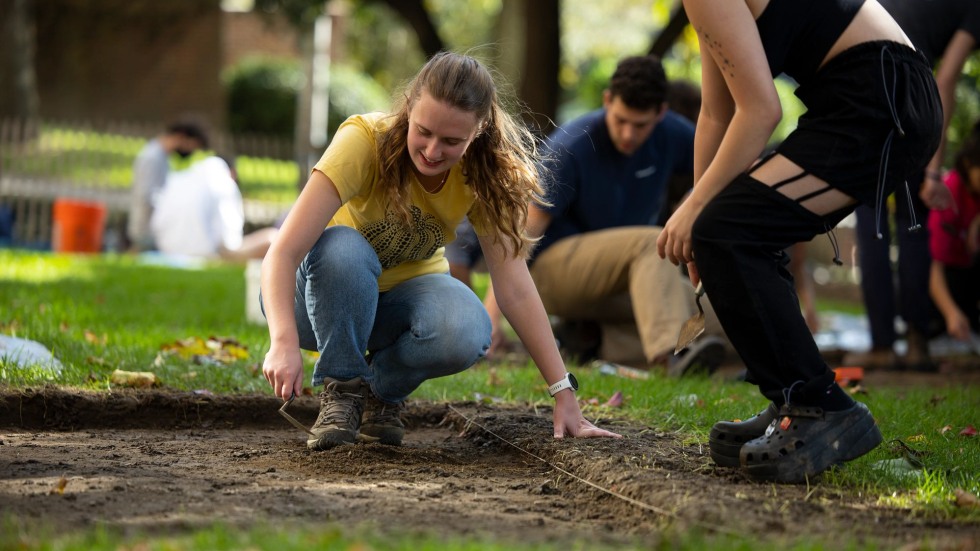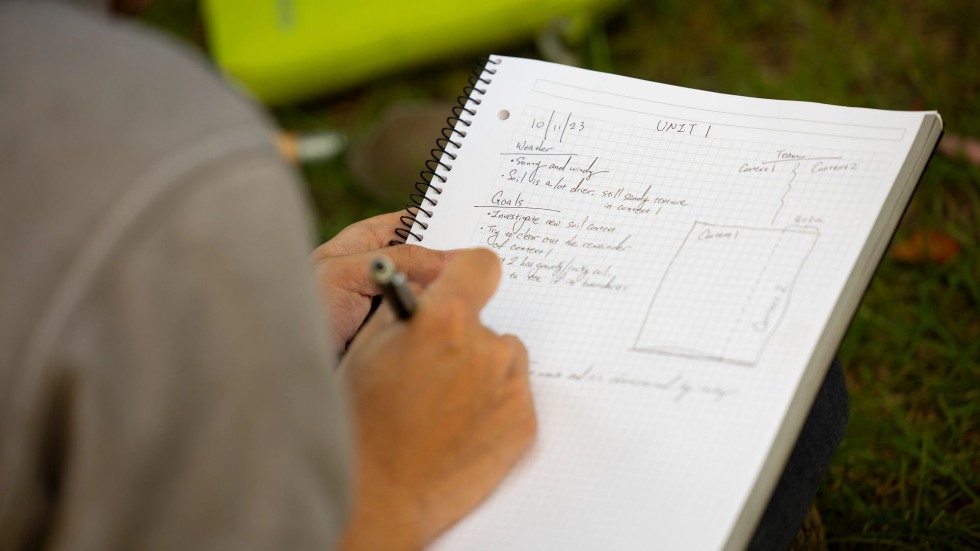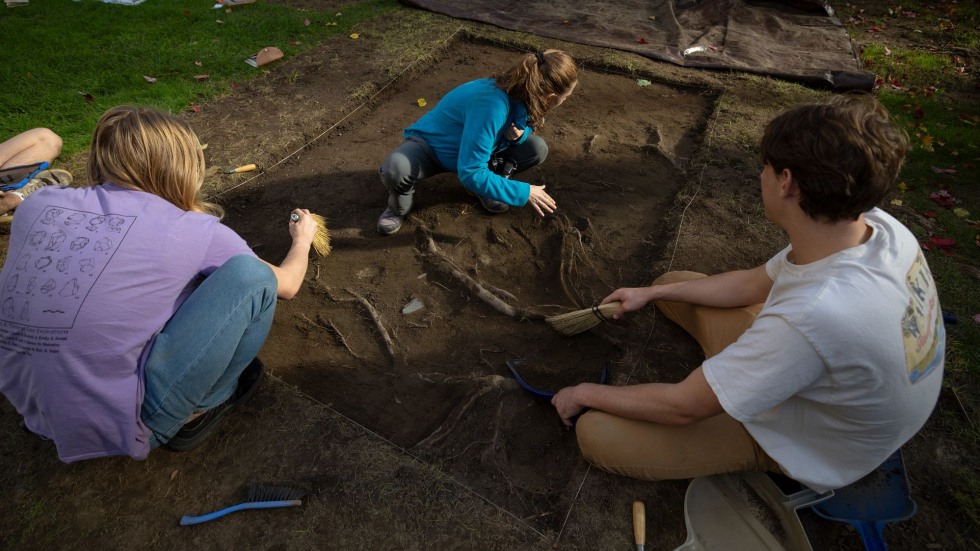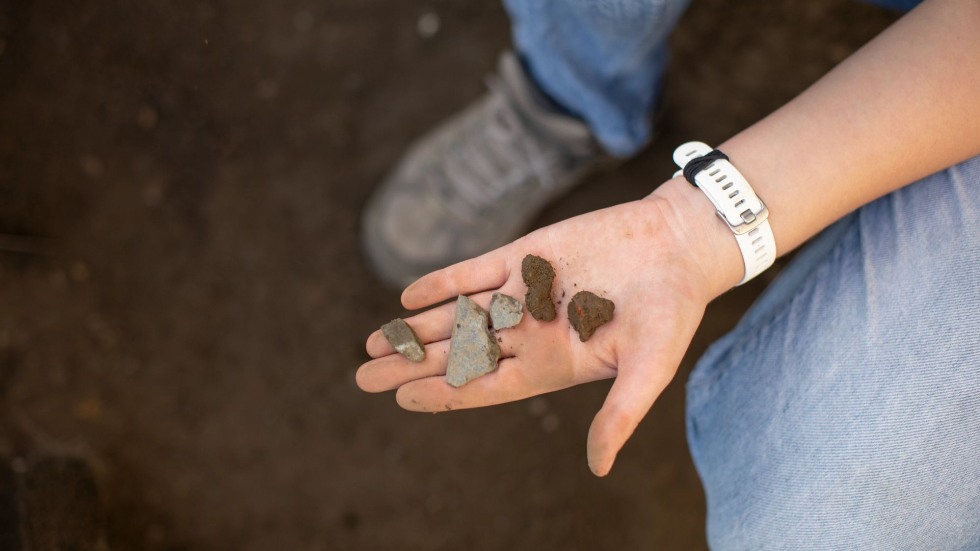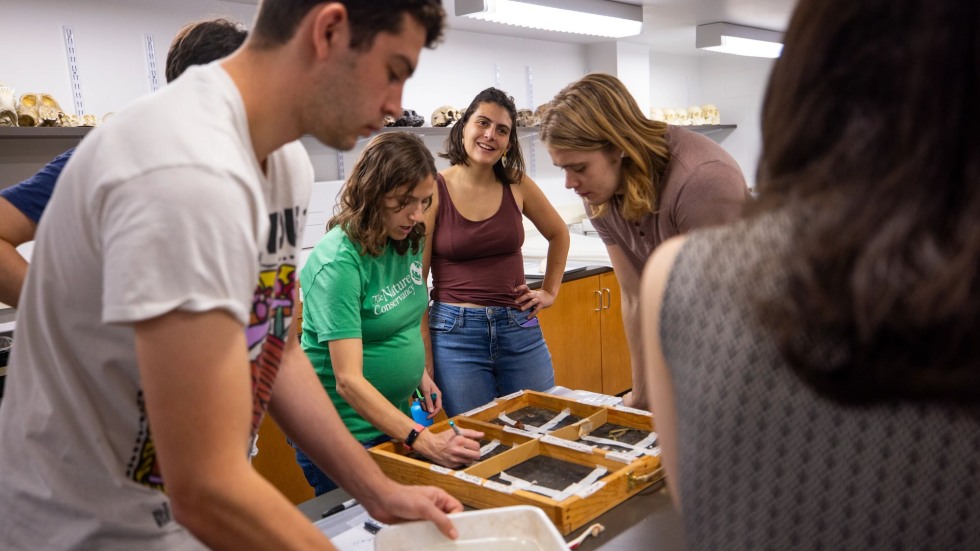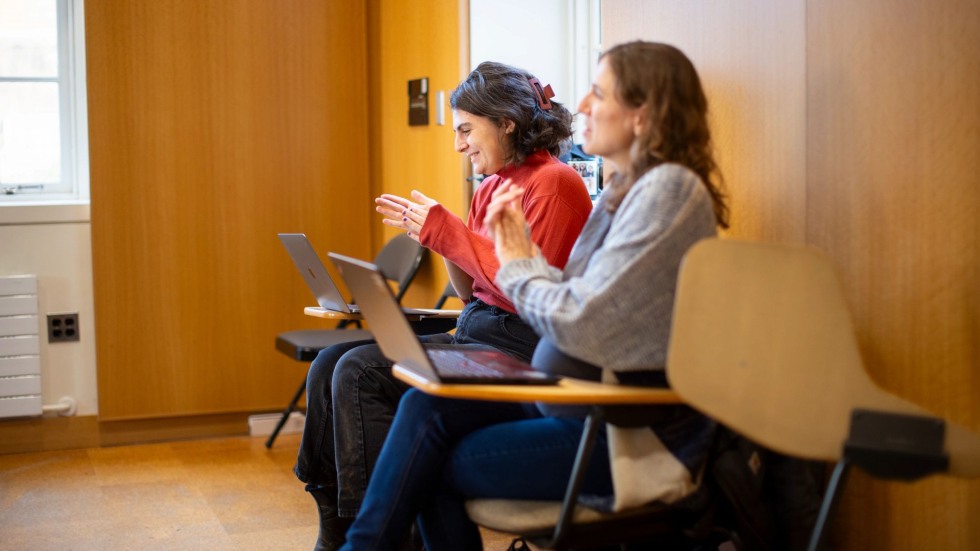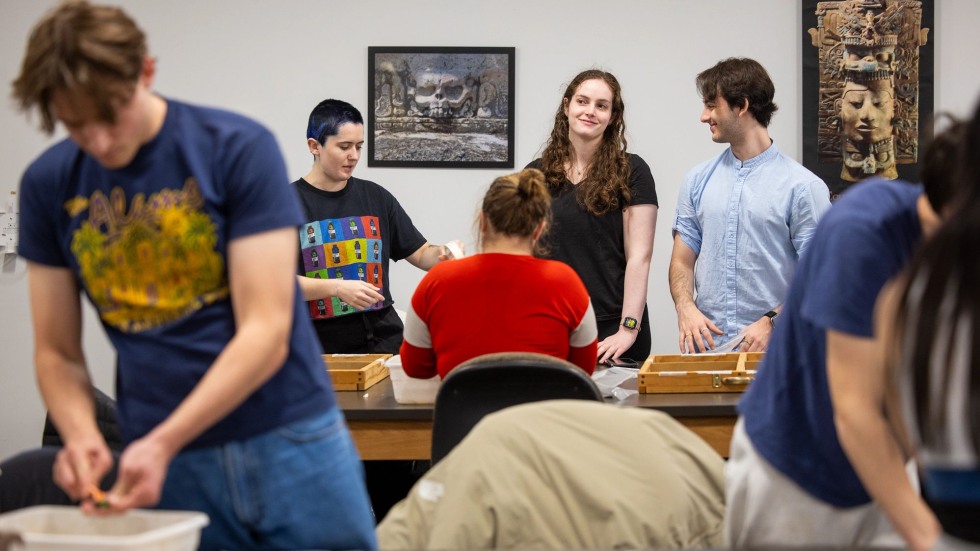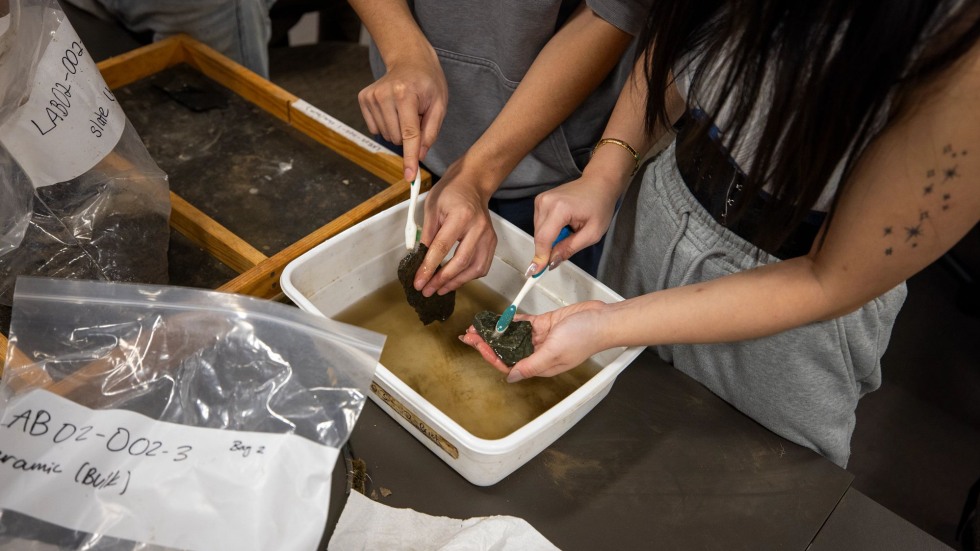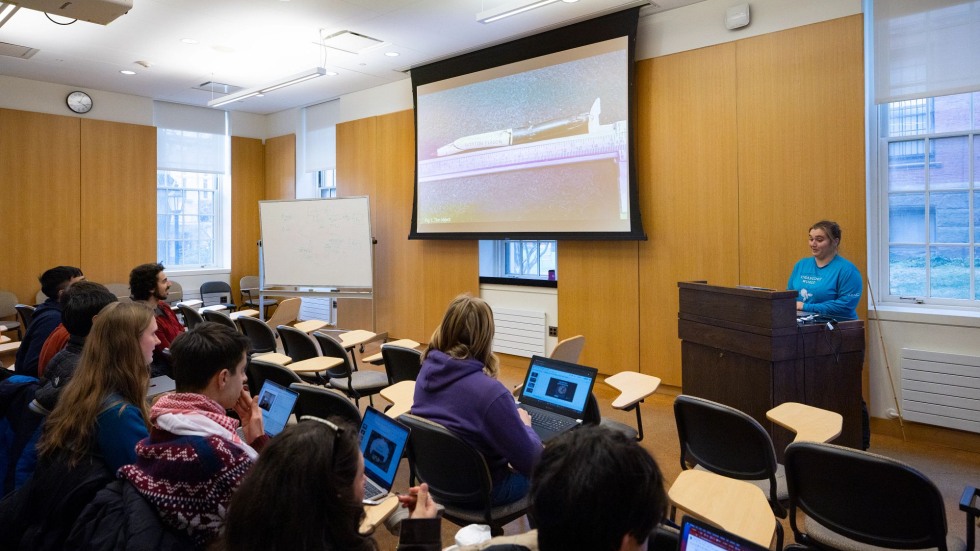PROVIDENCE, R.I. [Brown University] — Fragments of pottery, a ballpoint pen and pieces of slate might not look like much to the untrained eye, but the items signify a successful start to excavations at a new dig site for a course at Brown University called Archaeology of College Hill.
During the fall semester, students in the in-demand course offered by the University’s Joukowsky Institute for Archaeology and the Ancient World began an archaeological excavation of a green space next to Brown’s List Art Building, where a 19th-century home once stood at 58 College St. before it was demolished in the 1960s.
Offered every fall for the past 18 years, the hands-on course enables a thrilling learning experience for students like Jace Damon, a junior concentrating in archaeology.
“Having the opportunity to start excavation on a new site is extremely valuable,” Damon said. “It’s rare for undergraduate students to get the opportunity to do this type of firsthand fieldwork as a part of their coursework.”
Last year, students in the Fall 2022 course wrapped up a seven-year excavation at a plot at the corner of Hope Street and Lloyd Avenue that had been the site of the Sack family house in Providence. In prior years, excavations focused on various sites on or around Brown’s campus, including the Quiet Green and the John Brown House.
Students began their work at the new site in September and have been chronicling their progress on Facebook and Instagram pages. They are digging in four 2-by-3-meter trenches, each of which is believed to contain archaeological materials, such as the foundation remains of former buildings.
